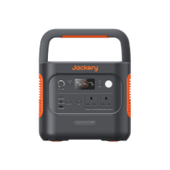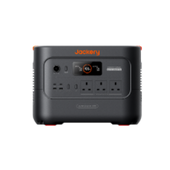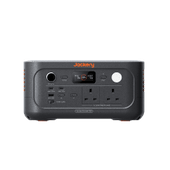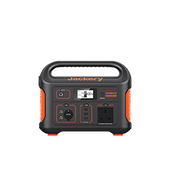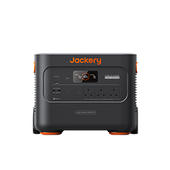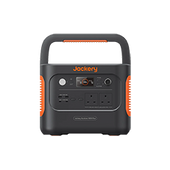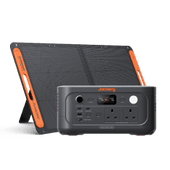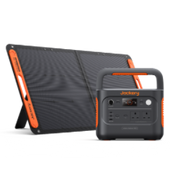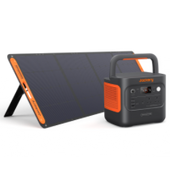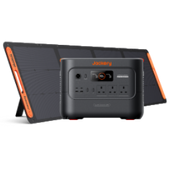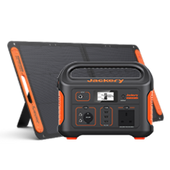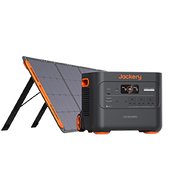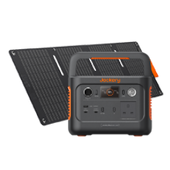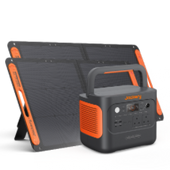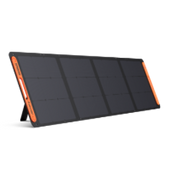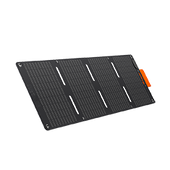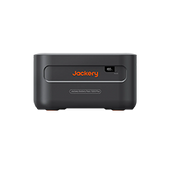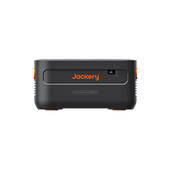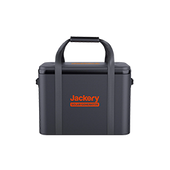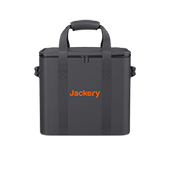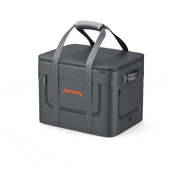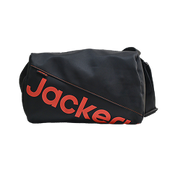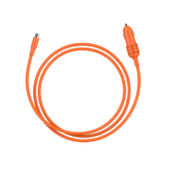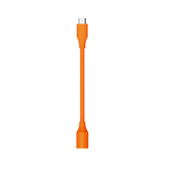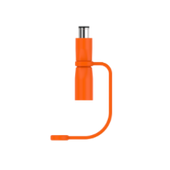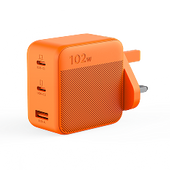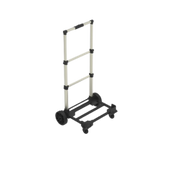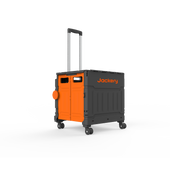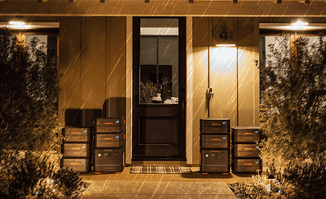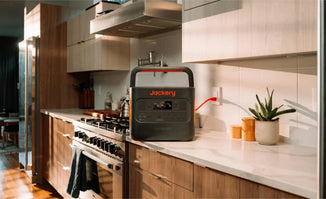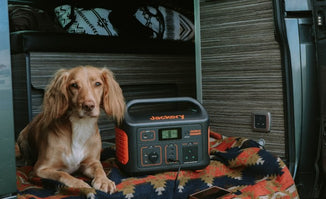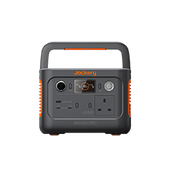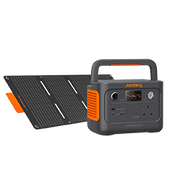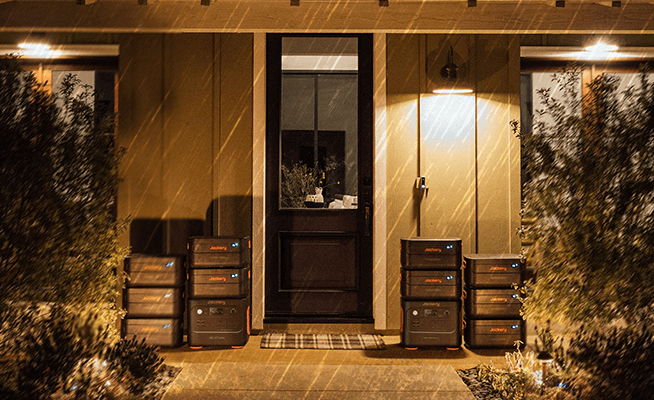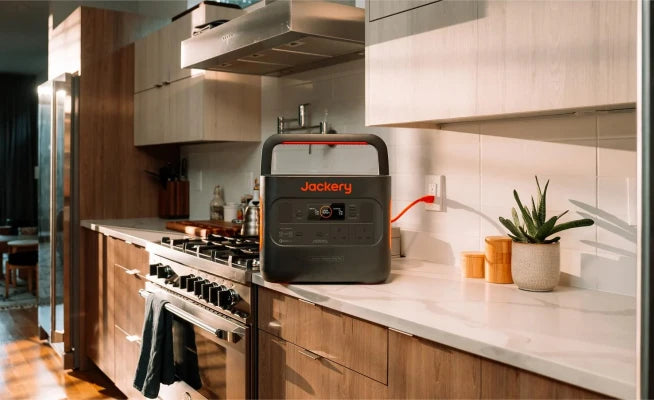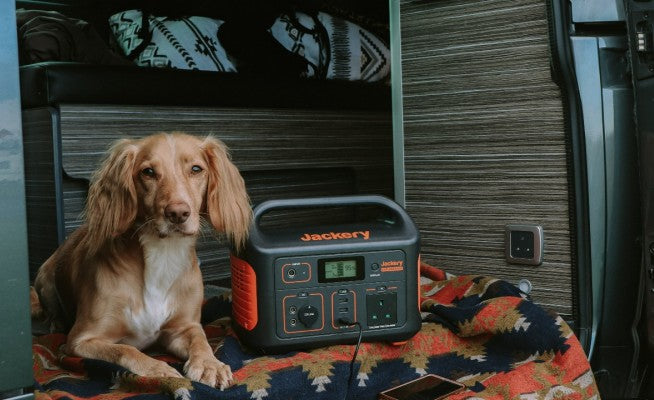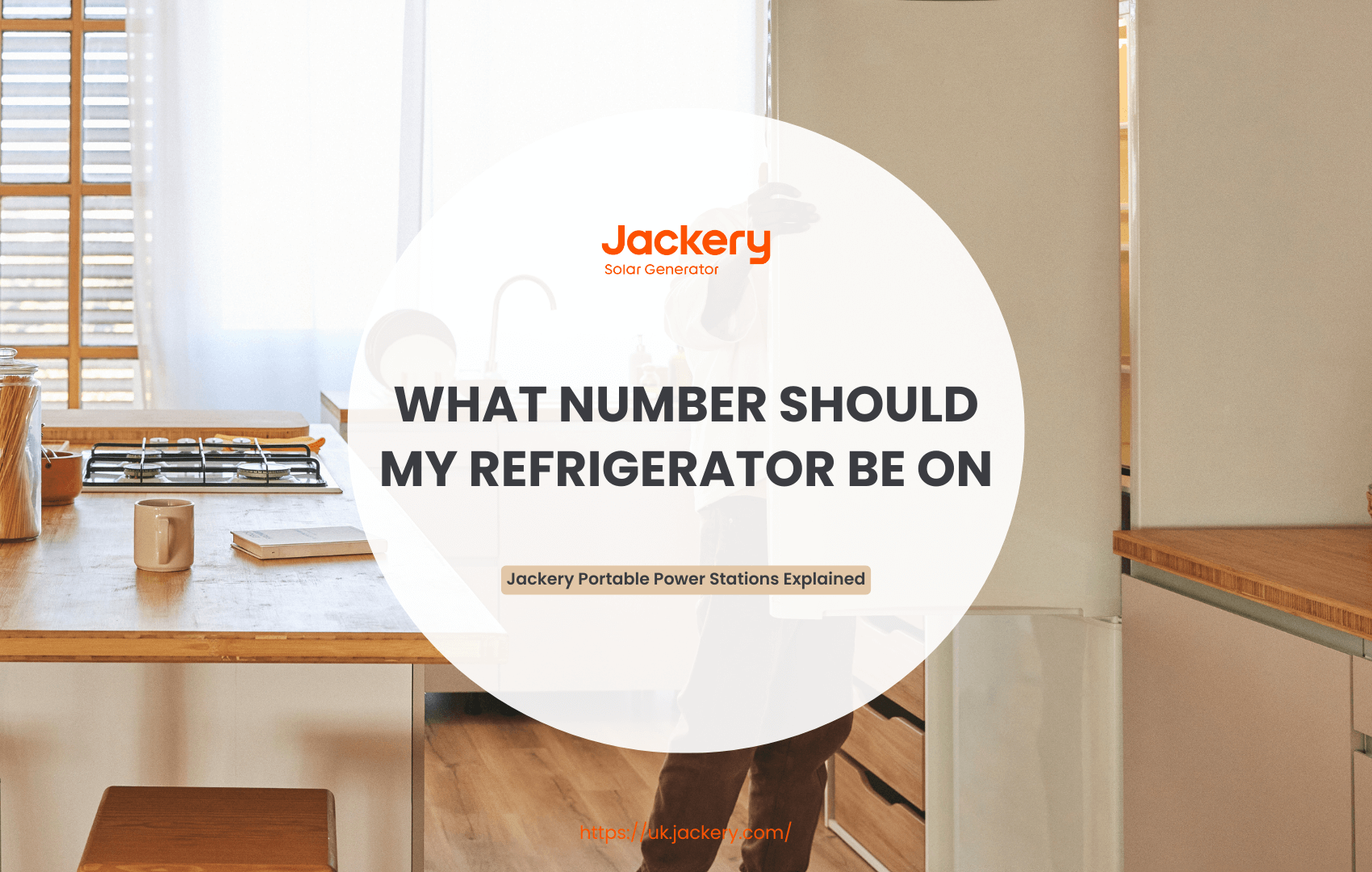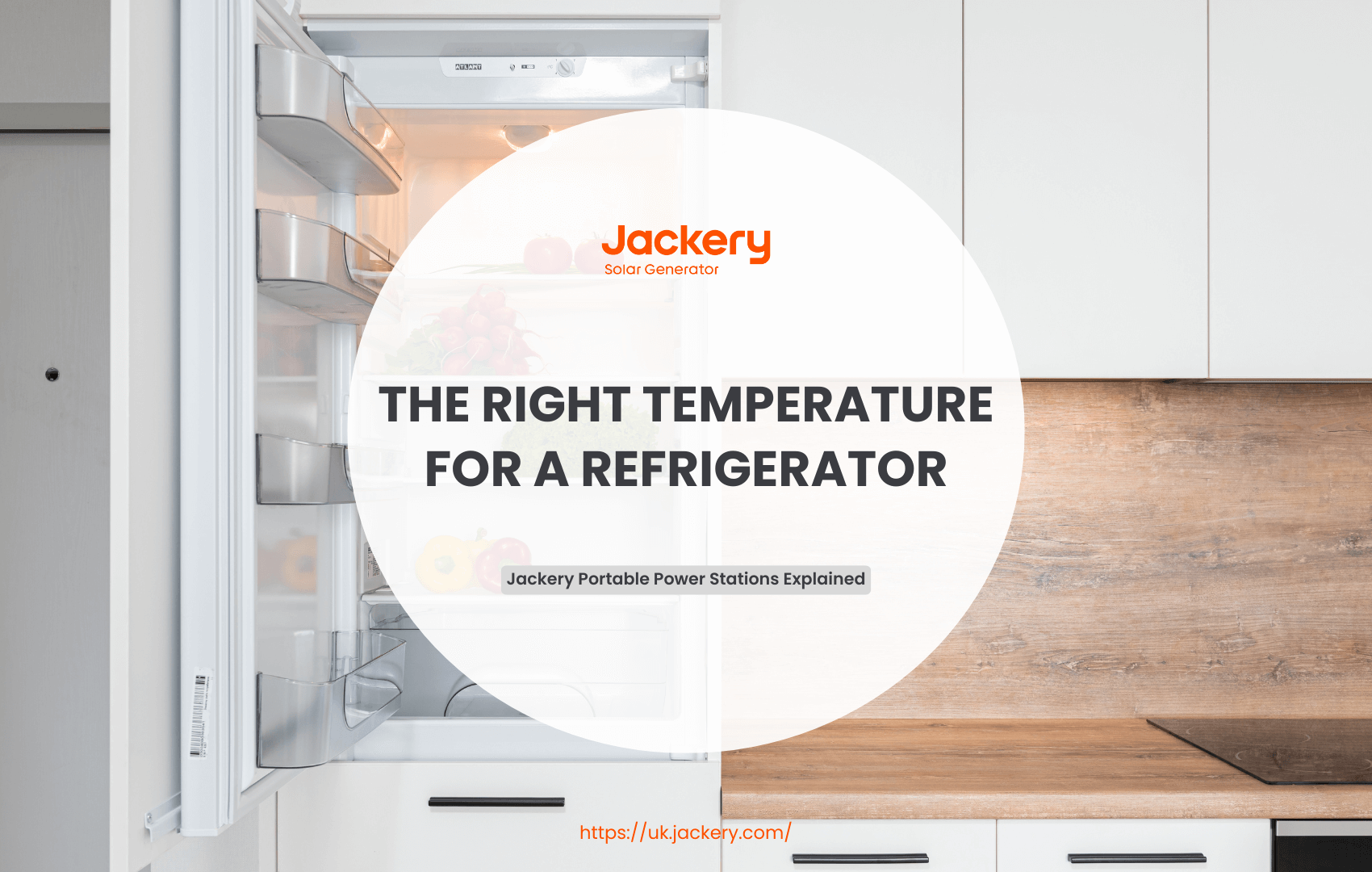If you've ever wondered, "What number should my refrigerator be on?" you're not alone. Setting your fridge to the appropriate temperature is crucial for keeping your food safe, reducing waste, and saving money on your power bill.
This UK-focused explanation explains what the numbers on your fridge mean, how to set the temperature dial, and how to accurately monitor inside temperatures. You may also find helpful tips on how to store food, how to prevent frequent refrigerator problems, and answers to common questions that people often ask. A properly built refrigerator may help your food last longer and keep your family healthy at the same time.
|
Key Takeaways: |
|
What Is the Ideal Fridge Temperature?
The ideal refrigerator temperature ranges from 37°F (3°C) to 40°F (5°C). This reduces the fridge's energy consumption while maintaining food freshness and safety.
Keeping food refrigerated slows the growth of dangerous microorganisms. If the temperature in your fridge is just right (3-5°C), your food will stay fresher for longer; if the temperature is too high, germs and microorganisms will multiply at a faster rate, potentially leading to various unpleasant illnesses.
Why Is the Temperature of Your Refrigerator or Freezer Important?
To ensure food safety and preserve the shelf life of your meals, keep your refrigerator freezer at the right temperature. Temperatures between 3°C and 5°C in the refrigerator compartment effectively slow down bacterial growth, protecting perishable goods and reducing the risk of foodborne illnesses. This is also the best choice, as it helps preserve the taste and nutritional value of foods, making them safe to eat for extended periods.
To prevent the growth of germs and other pathogens, maintain the freezer compartment at a temperature of -18°C or below. This procedure keeps the integrity of frozen meals and enables long-term preservation without altering taste or texture. Setting the temperature too low might result in wasted energy and higher electricity bills, whilst food can rot and become unhealthy if the temperature is set too high.
As a result, maintaining peak performance, maximising food freshness, and encouraging economical energy use all depend on routinely checking and adjusting the temperature settings in your refrigerator freezer.

Things To Know:
To assist you in maintaining your refrigerator freezer at optimal temperatures and keeping your food frozen and fresh, we thought you should be aware of a few facts:
- The temperatures inside the fridge fluctuate, with the coldest section right above the vegetable compartment.
- The ambient temperature determines the interior temperature, the amount of food stored within, and how frequently the door is opened. Note: We suggest shutting the door as soon as you have finished using your fridge freezer; otherwise, the internal temperature may rise.
- The 'maximum' setting is great after a large shop, when you need to chill down products rapidly, or on a hot summer day. The 'minimum' setting is ideal for colder months or when you're away on vacation, as the door will not be opened frequently, allowing you to conserve energy.
- Some fridge-freezer models have a "zero" option, which completely turns off the cooling system.
- If your refrigerator or freezer features a digital display, you can adjust the temperature with the simple push of a button.
What Number Should My Fridge Be on?
Setting the proper temperature in your refrigerator is crucial for preserving the freshness and safety of your foods. Many refrigerators include a numerical temperature control dial with options ranging from 1 to 5, or a corresponding range.
The number scale on your refrigerator's temperature control dial provides a clear indication of the appliance's cooling capabilities. However, it is essential to note that the temperatures associated with each number may range between refrigerator models and manufacturers. To obtain particular temperature information, consult your refrigerator's user manual.
What Do The Numbers Inside Refrigerators Represent, and Which Are the Coldest?
Most refrigerators have a temperature dial or setting knob that goes from 1 to 5 or 1 to 9, depending on the type. As a general rule, the higher the number, the colder the temperature, and the lower the number, the warmer the setting.
What Does Each Temperature Setting Mean?
|
Dial Display |
Temperature Setting |
|
0 |
Cooling system off |
|
Minimum of 1 |
Warmest setting |
|
2 or 3 |
Recommended setting |
|
Maximum or 5 |
Coolest Setting |
(Data Source: BEKO)
What Number Should a Safe And Efficient Fridge Be Kept On?
To start, a few clarifications are in order: A refrigerator's temperature typically fluctuates between 0.5 and 4 degrees Celsius (33 to 39 degrees Fahrenheit). It is also essential to know which shelf the food is stored on. In older appliances, increasing the setting makes it colder.
What Number Should My Refrigerator Be On?
Based on these two considerations, here's the number your fridge should be set to.
If you frequently store a large amount of food, use the cooler settings (3-4). If you don't need as much storage, choose between 2 and 3.
Ice will form if the temperature drops too low, obstructing air flow. Ice may potentially cause the fridge's internal thermostat to malfunction. This may cause electronic failure. If ice accumulates, knock it off, reduce the temperature, and keep in mind that the change will take at least 8 hours to take effect.
How Do You Know Whether Your Refrigerator Is Set Too High or Too Low?
If your fridge is too warm, you will soon notice some indicators, as perishable commodities such as milk, eggs, fruit, and vegetables can spoil more quickly due to the exposed heat. You may also notice droplets of water forming within your fridge, indicating that it is trying to keep a low temperature.
If your refrigerator is set too low, this will be very evident. Your food may freeze quickly, and you may notice ice buildup on the walls of your fridge. Try to gently adjust your fridge's temperature and leave it 24 hours to settle.
How To Set The Number of Your Refrigerator?
To set the temperature, first locate the dial at the top or in the centre of the fridge or freezer section. This dial regulates both the fridge and freezer temperatures. Then, for everyday refrigeration, turn the dial to 2 or 3. We recommend setting the average temperature inside the fridge to approximately 3°C to 5°C, and the freezer temperature to around -18°C.
Factors Affecting Temperature Control
The temperature control in your refrigerator may not work as well as it should due to factors such as the weather outside, how often you open the door, and the amount of food inside. During warmer weather, the refrigerator may need to work harder to maintain the desired temperature.
Adjustments for Climate and Usage
To compensate for higher ambient temperatures, you may need to adjust your refrigerator's temperature setting slightly in warmer climates or during the hottest summer months. Additionally, consider changing the temperature if you frequently store warm food or open the refrigerator door regularly.
Different Areas or Compartments May Have Different Temperatures
Certain areas of your refrigerator ought to be colder. But how much colder?
The refrigerator's bottom and back are usually the coolest areas. This is because the back of the fridge is the one that is furthest from the door, and cold air sinks. For refrigerators with ice-making sections at the top, which cool the top, the situation is different. The temperature differential between the top and bottom of frost-free refrigerators is smaller, however.
The following describes the ideal temperatures for the various sections of your refrigerator:
- The drawers for salad (or "crisper"): 2 degrees Celsius.
- One degree Celsius on the bottom shelf.
- 2 to 3 degrees Celsius on the higher shelves.
- 3 to 4 degrees Celsius at the door.
This explains why we should store colder items, such as raw meat, on the bottom shelf. In the meantime, milk spoils quickly, so the refrigerator door works well for items like juice.

How To Measure The Temperature of Your Fridge?
Before you can adjust the temperature in your refrigerator, you must first precisely measure it. Some refrigerators lack temperature markings and instead use a scale of 1 to 5. Even if your fridge has a built-in thermometer, it's usually off by a degree or two.
A thermometer is the most reliable method for determining the temperature in different regions of the refrigerator. Fridge thermometers are available in both analogue and digital formats at an affordable price.
If you already have a standard mercury thermometer, you'll simply need a glass of water. Here is what to do:
Place your thermometer in a glass of water.
Leave them overnight in the area of the refrigerator you wish to measure.
Simply check the temperature when you open the door first thing in the morning. Repeat this process over a few days to gain a comprehensive understanding of the fridge's components.
What Temperature Should a Freezer Be?
The recommended freezer temperature is -18 °C. Storing your produce at the proper temperature will keep it fresh, flavourful, and, most importantly, safe. If the freezer temperature is too high, your food will decay more quickly, and hazardous bacteria may begin to grow.
Suppose your fridge freezer temperature is set too low. In that case, it uses more energy, which is less ecologically friendly and can raise your energy bill. Additionally, freezer burn, ice crystals, and a lack of moisture can all impact the taste and texture of your food.
How Do You Determine the Temperature of Your Freezer?
To monitor the temperature of your freezer, place a thermometer in the centre of the compartment and let it settle for a few hours to get an accurate reading. Keep the freezer temperature at -18°C or below to ensure frozen items remain safe and sound. Checking the freezer temperature regularly can help keep it within the recommended range, which in turn helps maintain the safety and quality of your frozen items over time.
Tips for Maintaining Safe Fridge Freezer Temperatures
If your refrigerator temperature is hovering around 40°F or your freezer is too warm despite your temperature adjustments, you can take a few steps to help maintain an appropriate temperature.

Tip 1: Allow Food To Cool Before Storing
Warm bowls of leftover soup or roasted chicken may quickly heat the limited space in your fridge or freezer, putting the food at risk of bacterial growth. Allow foods to cool somewhat (but not to room temperature—that would take too long) before wrapping and storing them.
Tip 2: Examine The Door Seals
Gaskets at the edge of a refrigerator door prevent cold temperatures from escaping and warm temperatures from entering. If one of those gaskets leaks, chilly air may escape. This can make effectively cooling the equipment more difficult (and consume more electricity, increasing your monthly electric bill).
Tip 3: Stop Repeatedly Opening The Door
Every time you open the refrigerator door, cold air escapes and warm air enters. When you're hungry, resist the desire to stand in front of your refrigerator, looking for something to satisfy your cravings. Instead, obtain what you came for and close the door swiftly.
Tip 4: Clean Around Your Refrigerator
In addition to cleaning the interior of your refrigerator, you should also clean the area around the outside of the fridge. This will help to guarantee that the appliance operates smoothly and efficiently. When cleaning the outside of your refrigerator, take it away from the wall (if necessary) and clean the area behind it to remove any dust and debris. Clean your fridge's coils with a coil brush or hoover, if required.
Tip 5: Relocate Your Fridge a Few Inches From The Wall
It's common to put refrigerators right up against a wall, but this isn't the ideal place for a kitchen essential. If space allows, situate your fridge a few inches away from the wall rather than right against it. This allows air to flow slowly behind the refrigerator, which cools it down slightly and reduces its workload.
Tip 6: Keep Your Refrigerator and Freezer Filled
A full refrigerator is a happy fridge. The same goes for your freezer. If the shelves and drawers are mostly complete, the refrigerator temperature will stay cooler for longer and keep items cool. Just make sure you don't overcrowd the space and reduce air flow.
This can make transporting cooled air difficult and increase the likelihood of warm pockets of air. Ideally, leave approximately 20% of the room open. (Organising your refrigerator can also assist with this.) If those store-bought ice bags are taking up too much freezer space, consider investing in a nice ice maker.
More Refrigerator Food Storage Tips
Storing your food correctly includes more than simply setting the optimum fridge temperature. These practical methods will help you keep your food fresh, prevent bacterial growth, and conserve electricity.

Tip 1: Avoid Stacking Food too High in the Refrigerator
Once you understand where to place what in the fridge, you should avoid loading it so full that food on one level touches the one above. This can prevent cool air from moving, raising the temperature in some regions of the fridge and attracting heat-loving germs to your food.
Tip 2: Allow Leftovers To Cool Till Room Temperature
Always let leftovers cool to room temperature before storing them in the refrigerator. But don't leave them out for more than a few hours. Otherwise, the heat from your previously cooked food will raise the temperature in your refrigerator.
Not only will this diminish the freshness of other food in the fridge, which must be kept at a consistent temperature, but it will also cause your fridge to work harder to cool down, thereby increasing your energy bills.
Tip 3: Maintain a Clean Fridge to Prevent Bacteria
Every time you unpack goods, you bring new microorganisms into the fridge, so it's no wonder that most refrigerators are overflowing with bacteria. In many situations, they are harmless, but when we investigated the sorts of bacteria typically found within fridges, we were alarmed by the prevalence of Aeromonas bacteria, Enterobacter cloacae, and Klebsiella oxytoca, among others.
These microorganisms have been associated with respiratory and urinary infections, particularly in persons with pre-existing medical conditions or compromised immune systems. They are most likely the result of unwashed veggies, emphasising the significance of cleaning your fridge regularly.
Along with maintaining the right temperature, regular cleaning helps eliminate bacteria and prolongs the life of your food. Cleaning the fridge's touch surfaces, such as the knobs and door trays, regularly can also help to keep bacteria at bay.
Jackery Portable Power Stations for Refrigerators
Jackery Portable Power Stations are increasingly popular for powering refrigerators, particularly in scenarios like off-grid living, camping, or during power outages. While they aren't primarily designed to "save electric bills" in a conventional sense for a constantly running home refrigerator, they offer significant advantages.
If the power goes out, even for a short time, it can cause food in your fridge and freezer to go bad. A Jackery allows you to keep your perishables cold, saving you money on replacing lost food and avoiding potential health risks.
Jackery Power Stations provide a clean, consistent power source that is safe for delicate equipment, such as refrigerator compressors. Unlike gas generators, they produce no fumes, making them safe for indoor use (though ventilation is always recommended). Gas generators are noisy and disruptive. Jackery units are virtually silent, which is a massive advantage during an outage, especially if you're trying to sleep or maintain some peace in your home.
Jackery Explorer 3000 v2
The Jackery Explorer 3000 v2 is an excellent way to power refrigerators in various situations, such as when the power goes out, during an emergency, or to reduce electricity costs. It is well-suited for these challenging tasks due to its strong specifications and features.

Massive 3072Wh Capacity: This is a substantial battery capacity, designed to provide extended runtimes for critical appliances, such as refrigerators. A typical household refrigerator (around 200W) can run for 24-48 hours on a single charge of the Jackery 3000 v2, depending on its efficiency and duty cycle. Even larger, less efficient models (e.g., 400W) can still get significant run time (e.g., 5-8 hours).
3600W Continuous Output (7200W Surge): When the compressor of a refrigerator turns on, it requires a significant amount of "starting wattage" or "surge wattage." The 3000 v2 can tolerate these short power surges without tripping or shutting down since it has a constant output of 3600W and a surge capability of 7200W. This means it will work with practically all domestic refrigerators.
Powers Other Essentials: Beyond the refrigerator, its high output allows you to power other critical devices simultaneously, such as lights, Wi-Fi routers, phones, laptops, and even some medical equipment, during an outage.
Uninterruptible Power Supply (UPS) Function: The 3000 v2 features a built-in UPS that automatically switches to battery power in under 20 milliseconds when the power is lost. This seamless transition is crucial for keeping sensitive electronics, such as refrigerators, running without interruption, thereby preventing food spoilage.
Long-lasting LiFePO4 Battery: The LiFePO4 (Lithium Iron Phosphate) battery chemistry offers superior longevity, with over 4,000 charge cycles to 70%+ capacity. This means it can reliably serve as an emergency backup for many years (up to 10 years of daily use) without significant degradation.
Jackery Explorer 2000 Plus
The Jackery Explorer 2000 Plus is an excellent choice for powering refrigerators, particularly when reliable backup power is needed, such as during an outage or emergency. It can also help you keep your energy bills down. Here's a detailed look at why:

High Continuous and Surge Wattage: A standard full-size refrigerator typically uses 100-800 watts when running, but it requires a significantly higher "surge" wattage (often 1000-2500 watts, or even higher) for a brief moment when the compressor starts up. The Jackery Explorer 2000 Plus boasts a continuous output of 3000W and a 6000W surge peak. This ample power ensures it can comfortably handle the starting and running demands of virtually any household refrigerator or freezer.
Large Capacity for Extended Runtimes: 2042.8Wh base capacity. This substantial battery capacity means the 2000 Plus can keep a typical refrigerator (which cycles on and off) running for 1-2 days on a single full charge. This is crucial for navigating most common power outages. The 2000 Plus is highly modular. You can add up to five additional Battery Pack 2000 Plus units, expanding the total capacity to a staggering 12kWh.
Exceptional Lifespan: The 2000 Plus utilises a LiFePO4 (Lithium Iron Phosphate) battery. These batteries are rated for 4000 charge cycles to 70-80% capacity, meaning they can last for 10 years or more even with daily use. This significantly outperforms older lithium-ion chemistries (typically 500-1000 cycles), making it a much more durable and cost-effective long-term investment.
Ultra-Fast AC Charging: The 2000 Plus can be fully recharged from a wall outlet in approximately 1.7 hours. This rapid charging is vital for quickly preparing for an impending storm or topping up after an outage.
Whisper Quiet (under 30dB): Unlike noisy gas generators, the 2000 Plus operates at a remarkably low noise level, comparable to that of a quiet library. This is crucial for maintaining comfort in your home during an outage.
Refrigerator Temperature Settings Explained
Choosing the correct refrigerator setting can be difficult, especially when dials display numbers instead of degrees. This section addresses the most frequently asked questions regarding what the numbers indicate and how to keep your food safely cold.

What Temperature Should the Fridge Be Set to Between 1 and 7?
If your refrigerator has a dial, you may be wondering which number to set it to. The recommended fridge temperature is 1-5°C (34-41°F). The recommended temperature setting for most refrigerators is 4, which is typically located at the middle of the dial. However, please note that each refrigerator is unique, and you should always refer to your user manual for detailed instructions.
What Is the Lowest Temperature Setting on a Freezer?
The coldest setting on a freezer usually is -18°C (0°F). However, keep in mind that setting your freezer to the coldest setting isn't always essential and can even be detrimental to some items. For example, if wine and ice cream are stored at too low temperatures, they can become overly complicated and lose their flavour.
How Do I Know If My Fridge Temperature Is Correct?
A fridge thermometer can help ensure your fridge is at the right temperature. Place the thermometer in the centre of the refrigerator, away from the walls and doors. Wait a few hours, then check the temperature. If the temperature falls within the required range of 1-5°C (34-41°F), your refrigerator is operational.
How Do I Change the Temperature Dial?
To change the temperature on your refrigerator, locate the dial and turn it to the desired setting. Allow at least 24 hours for the temperature to stabilise before making any further changes. To modify the temperature on a digital display panel, refer to the instructions in the user handbook.
What Is The Ideal Refrigeration Temperature?
The recommended refrigerator temperature is 1-5°C (34-41°F). This temperature range inhibits bacteria growth and keeps your food fresher for longer. To ensure food safety, the US Food and Drug Administration (FDA) recommends maintaining a refrigerator temperature of 4°C (40°F) or below.
It is crucial to note that industrial fridges may demand varying temperatures based on the type of food being stored. Fish, for instance, should be stored at a temperature slightly lower than that of other items. Always check your user manual for temperature settings that are specific to your refrigerator model. To keep food safe and avoid getting sick from it, it's essential to maintain the right temperature.
FAQs
The following are the frequently asked questions about the number of my refrigerator:
1. Should a fridge be on 1 or 5?
A higher number (near 5) on the fridge means colder temperatures, whereas a lower number (closer to 1) means warmer temperatures. The "5" setting on a scale from 1 to 5 usually means the coldest temperature. The best temperature for a fridge is between 3 and 5 degrees Celsius (37 and 41 degrees Fahrenheit). It is best to use a thermometer to check the actual temperature inside the fridge, as settings can vary between models.
2. Which is colder, 1 or 7 in a fridge?
Setting 7 is colder than setting 1 on a refrigerator with settings from 1 to 7. The fridge will be colder the higher the number on the dial.
3. Should I set my fridge to 2°C or 3°C?
You should set your fridge to this value based on two factors: use the colder settings (3 to 4) if you always have a lot of food in storage. Choose between 2 and 3 if you're not storing as much.
4. Is 3 too low for a fridge?
The ideal temperature range for a refrigerator is between 37°F (3°C) and 40°F (4°C). This will keep the fridge from using too much electricity and, more importantly, keep food fresh and safe to eat. Keeping food cold helps stop the formation of dangerous microorganisms.
Final Thoughts
Keeping your refrigerator at the right temperature isn't just for your convenience; it's also essential for food safety and energy economy. You can keep your fridge running efficiently by understanding the meanings of the numbers on your dial, monitoring the internal temperatures, and making adjustments according to the season or usage frequency.
To ensure that air can circulate properly, remember to clean your appliance regularly, check the door seals, and avoid overloading it. Little things, such as letting food cool before storing it and organising items in the correct order on shelves, can make a significant difference.





